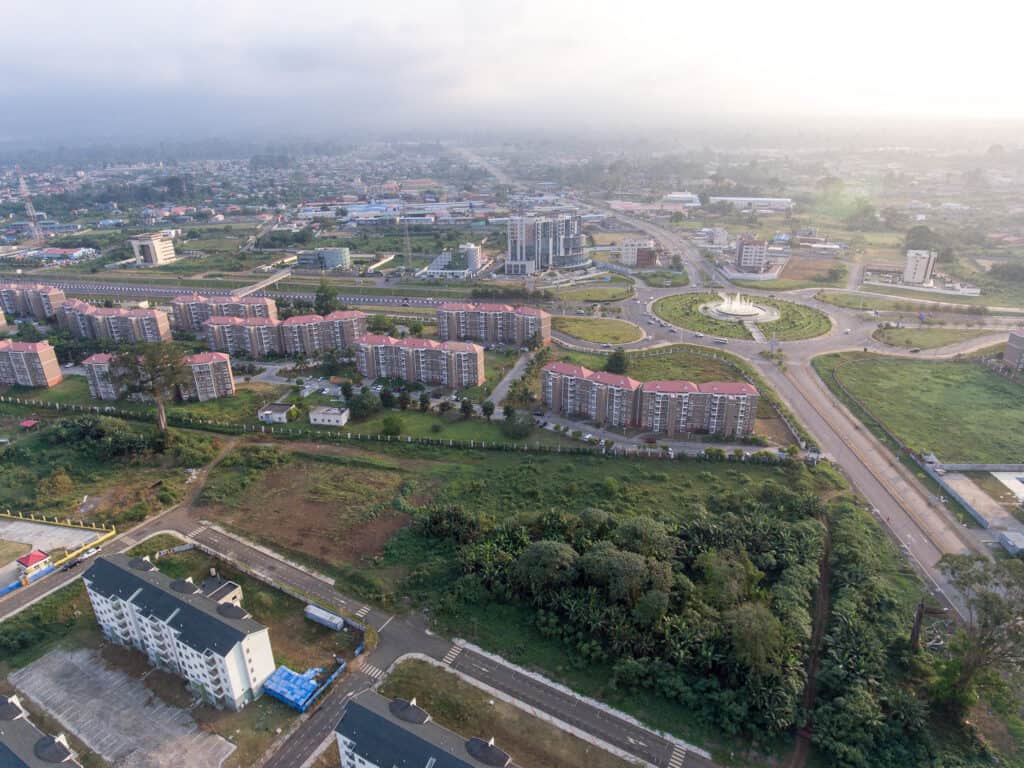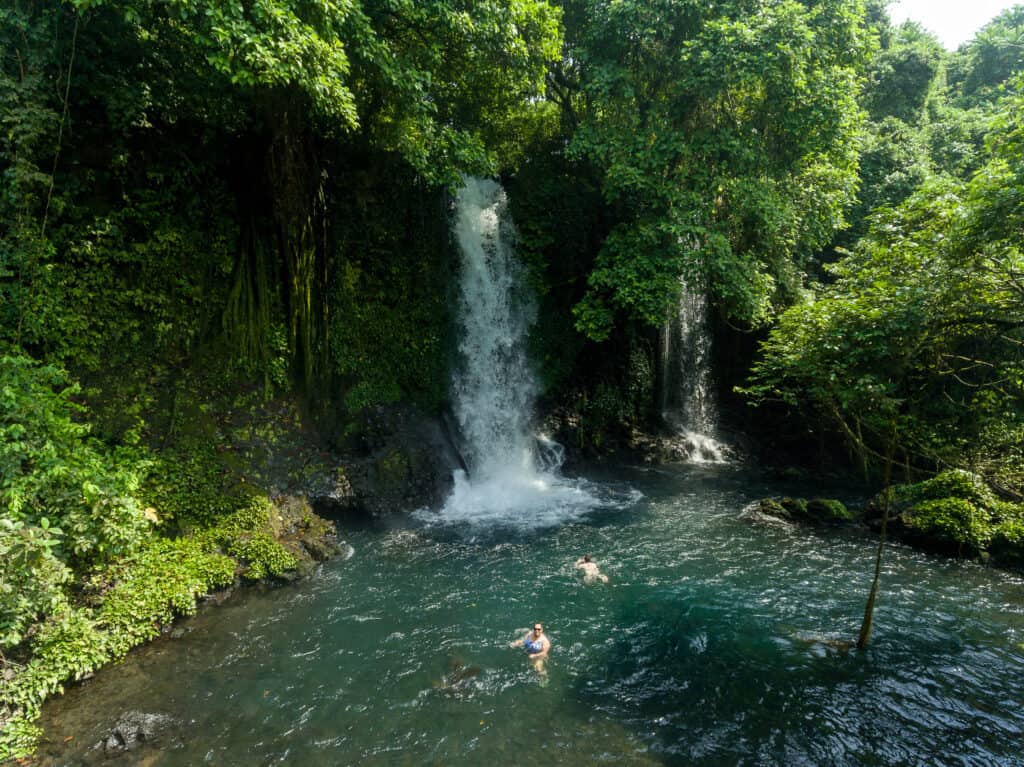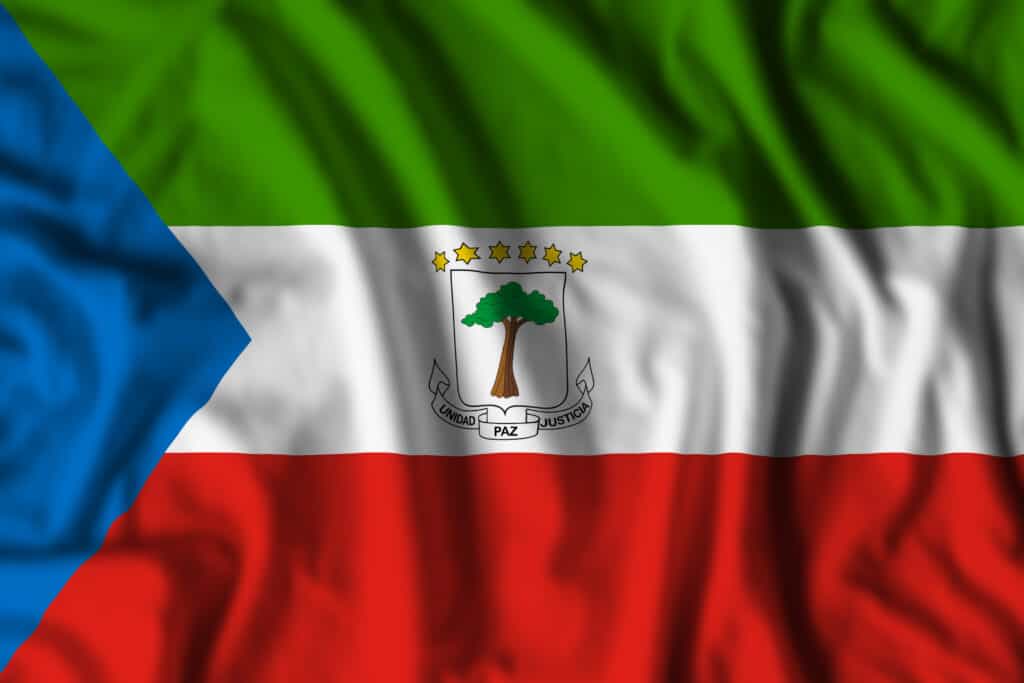Introduction
The flag of Equatorial Guinea has changed alongside the country’s fluctuating government and presidency. The political sphere within Equatorial Guinea can be rocky and, in some cases, treacherous. The national flag serves as a constant reminder of the values of the country: unity, peace, and justice. The flag of Equatorial Guinea reflects the country’s founding, its continual fight for liberation from tyranny and foreign rule, and its dedication to natural resources. Discover the beauty of the flag of Equatorial Guinea and its relevance in political and social contexts.
Founding of Equatorial Guinea

Malabo is the capital of Equatorial Guinea and is known for its commitment to Spanish culture.
©Jan Ziegler/Shutterstock.com
Equatorial Guinea is a former Spanish colony that resides on the western coast of the African continent. The country gained independence on October 12, 1968. Administrative power over Equatorial Guinea was shared between Francisco Macias Nguema and Atanasio Ndong Malone. However, Malone, the Guinean minister, aimed to stage a coup against Nguema, who held executive power. In response, Nguema surprised Malone and had him thrown out of a window. This lead to serious injuries and eventually in Malone’s death.
Nguema alleged that Spain took part in trying to stage the coup. He made efforts to remove white settlers from Equatorial Guinea following the death of Malone. Afterward, Nguema denounced the idea opposing parties and promoted the Partido Unico Nacional, which translates means Only National Party. In 1972, he decided on life term limits for his presidency. Nguema determined to do away with the Catholic Church and any institutions based in Catholicism, including schools and clinics. Furthermore, the economy collapsed under the rule of Nguema due to several factors affecting farmers and merchants.
Nguema appointed family members and individuals from his indigenous people group to run all aspects of the government and other institutions. For instance, his cousin took Malone’s former position, and his nephew assumed six separate titles such as Minister of France and Secretary of State. By controlling the entire state through family and ethnic ties, Nguema was able to become an absolute dictator with loyal government officials. In fact, Nguema’s thirst for power led him to feel threatened by anyone in opposition. As a result, Nguema executed, both directly and indirectly, all dissenters that he felt threatened by.
History of Politics in Equatorial Guinea
The straw that broke the camel’s back was when Nguema executed the nephew of Lieutenant Colonel Teodoro Obiang Nguema Mbasogo. Mbasogo organized an attack on President Nguema in August of 1979. However, some believe that Spain had been planning to seize back power from President Nguema beforehand and may have made contributions in the overthrow of the presidency. Eventually, the president was found guilty and was executed by firing squad, surrounded by 1,500 onlookers. Afterward, Mbasogo rose to power and declared that Equatorial Guinea would become a military state.
However, Mbasogo’s rule mirrored that of the former Nguema. In fact, the presidency allocated power to those within the Nguema’s ethnic group, maintained a one-party state, and did away with any dissenters through exile. In other words, Mbasogo preserved the same forceful control of the state and reign of terror that characterized the original Nguema’s presidency. Teodoro Obiang Nguema Mbasogo still holds executive power in Equatorial Guinea to this day.
Characteristics of Equatorial Guinea

Tropical rainforests span the continental part of Equatorial Guinea. However, deforestation by the lumber industry threatens regions inhabited by various animals and plants.
©Jan Ziegler/Shutterstock.com
Climate in Equatorial Guinea is characterized by hot temperatures, averaging the in the 70s ºF, and heavy precipitation, especially in the coastal region. Wet seasons occurs between February and June and again between September and December. The sky appears mainly cloudy throughout the country, and the southern portion receives an abundance of rainfall.
Tropical rainforests span the continental part of Equatorial Guinea. However, deforestation by the lumber industry threatens regions inhabited by various animals and plants. Trees within the rainforest are diverse, including species like mangroves, African walnuts, and mahoganies. Animals in Equatorial Guinea are diverse, too. Ranging from gorillas to elephants and including many types of insects and reptiles, biodiversity in the country is prominent.
Equatorial Guinea includes a variety of ethnic groups alongside Spaniards, who originally founded the former colony. As of 2000, the Fang people made up the largest ethnic group in the country with the Bubi people and Yoruba people following in population rank. The second-largest ethnic group in Equatorial Guinea is that of “other,” defining a compilation of other smaller ethnic groups or immigrants within the country.
The official languages of Equatorial Guinea are Spanish and French, but each ethnic group speaks their own language. Most of the population in Equatorial Guinea affiliates with Roman Catholicism, which was banned in 1978 and reinstated alongside other religious affiliations in 1986. However, many ethnic groups affiliate with their own traditional religions and engage in indigenous religious practices.
Equatorial Guinea has an approximate population of 1.27 million. As of 2018, 72.1% of the population in Equatorial Guinea lived in urban areas. The remainder lived in rural areas. Rural areas are characterized by small villages and traditional agricultural practices. Malabo is the capital of Equatorial Guinea and is known for its commitment to Spanish culture.
History and Symbolism of the Flag of Equatorial Guinea
Equatorial Guinea did not have its own flag while under Spanish rule. In fact, many believe that the Spanish flag was flown in Equatorial Guinea while it remained a colony. The flag of Equatorial Guinea was introduced after the country gained its independence in 1968. However, the original flag did not include the centered coat of arms. The coat of arms was added later but then replaced by Nguema. Nguema’s coat of arms depicted a chicken, a sword, and a variety of tools such as an axe and a hoe. Nguema also added the term “work” above the national motto, which is described in the paragraph below. However, the original coat of arms was reestablished on the flag after the overthrow of Nguema in August of 1979.
The coat of arms depicts a silk-cotton tree in the center of the flag, which represents the tree that stood over the signing of the first treaty between a local ruler of Equatorial Guinea and Spain. Equatorial Guinea’s motto is written on the flag below the tree, which reads “Unidad, paz, justicia.” The phrase translates to “Unity, peace, justice.” The six stars above the tree signify the five islands and coastal region that contribute in the makeup of Equatorial Guinea.
Between the islands lies the sea, which connects them to the mainland. The sea is represented by the blue triangle pictured on the lefthand side. The green stripe signifies vegetation, as many people in Equatorial Guinea engage in agriculture and the country is blessed with an abundance of natural beauty and diverse tree species. The middle white stripe represents peace, and the lower red stripe reflects the blood that many shed in the fight for freedom.

The coat of arms depicts a silk-cotton tree in the center of the flag, which represents the tree that stood over the signing of the first treaty between a local ruler of Equatorial Guinea and Spain. Equatorial Guinea’s motto is written on the flag below the tree, which reads “Unidad, paz, justicia.” The phrase translates to “Unity, peace, justice.” The six stars above the tree signify the five islands and coastal region that contribute in the makeup of Equatorial Guinea.
©Dmytro Balkhovitin/Shutterstock.com
Other Flags of Equatorial Guinea
In 1986, two presidential flags were proposed, but they were not adopted. Each flag contained the image of the silk-cotton tree and the yellow stars, which differed from the national flag in number but maintained the same shape and style.
Furthermore, the provinces of Equatorial Guinea each have their own flag. For instance, the Province of Kié-Ntem has a flag with three horizontal color bars in the shades of pink, white, and blue from top to bottom. Equatorial Guinea’s motto, “Unidad, paz, justicia,” lies in the center of the flag. A different coat of arms sits in the canton area, in the upper lefthand corner. The coat of arms is green and flanked by palm branches. Four images are illustrated in the coat of arms: a red crown, a fist, five arrows, and an elephant. Below the coat of arms, “Provincia Kié-Ntem” is written.
Up Next
- 10 Countries with Stars on their Flags
- 10 Countries with Blue and White Flags
- The “Join, or Die” Snake Flag’s Surprising History, Meaning, and More
The photo featured at the top of this post is © Lana2016/Shutterstock.com
Sources
- Martin Revayi Rupiya, Available here: https://www.scirp.org/journal/paperinformation.aspx?paperid=102920
- René Pélissier, Available here: https://www.britannica.com/place/Equatorial-Guinea
- Whitney Smith, Available here: https://www.britannica.com/topic/flag-of-Equatorial-Guinea
- Mappr, Available here: https://www.mappr.co/flag-maps/equatorial-guinea/
- Flagmakers, Available here: https://flagmakers.co.uk/media/b3adphdt/flag-of-equatorial-guinea-a-brief-history-download.pdf
FAQs (Frequently Asked Questions)
What language does Equatorial Guinea speak?
The official languages of Equatorial Guinea are Spanish and French, but each ethnic group speaks their own language.
Does the flag of Equatorial Guinea have a coat of arms?
Yes, the coat of arms pictures a silk-cotton tree, the national motto, and six stars.
What do the colors on the flag of Equatorial Guinea signify?
The blue triangle represents the sea. The upper green stripe signifies vegetation, the middle white stripe represents peace, and the lower red stripe reflects the blood that many shed in the fight for freedom.
Thank you for reading! Have some feedback for us? Contact the AZ Animals editorial team.






